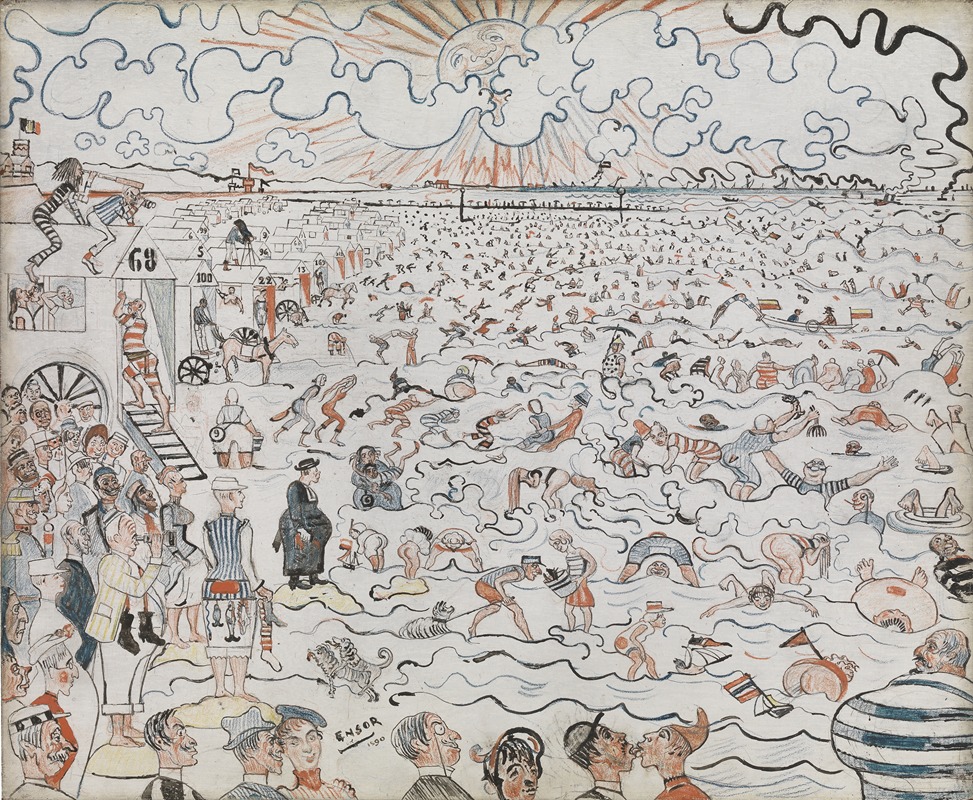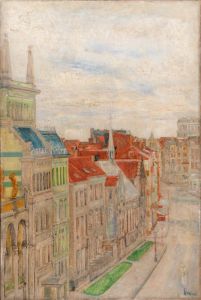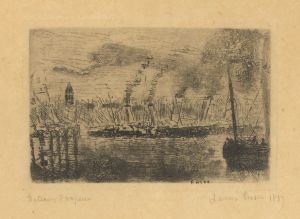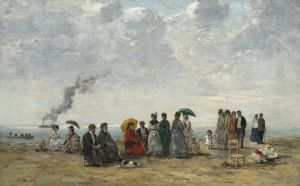
The Beach at Ostende
A hand-painted replica of James Ensor’s masterpiece The Beach at Ostende, meticulously crafted by professional artists to capture the true essence of the original. Each piece is created with museum-quality canvas and rare mineral pigments, carefully painted by experienced artists with delicate brushstrokes and rich, layered colors to perfectly recreate the texture of the original artwork. Unlike machine-printed reproductions, this hand-painted version brings the painting to life, infused with the artist’s emotions and skill in every stroke. Whether for personal collection or home decoration, it instantly elevates the artistic atmosphere of any space.
James Ensor's painting "The Beach at Ostende" is a notable work by the Belgian artist, who is renowned for his unique style that blends elements of Impressionism and Symbolism. Ensor was born in Ostend, Belgium, in 1860, and the coastal town remained a significant influence throughout his life and career. This painting is one of several works where Ensor captures the essence of Ostend, reflecting both the physical landscape and the social atmosphere of the time.
"The Beach at Ostende" depicts a scene on the shores of the North Sea, where Ensor spent much of his life. The painting is characterized by its vibrant use of color and dynamic composition, which are hallmarks of Ensor's style. He often employed bold, expressive brushstrokes and a vivid palette to convey the lively and sometimes chaotic nature of beach life. In this work, Ensor captures the bustling activity of the beachgoers, the interplay of light and shadow, and the expansive sky that stretches over the sea.
Ensor's work is often noted for its satirical edge and its exploration of themes such as mortality, identity, and the human condition. While "The Beach at Ostende" is primarily a landscape, it also reflects Ensor's interest in the social dynamics of his environment. The beach was a popular destination for both locals and tourists, and Ensor's depiction includes a diverse array of figures, each engaged in their own activities. This diversity of characters can be seen as a microcosm of society, a theme that Ensor explored in many of his other works.
The painting also demonstrates Ensor's skill in capturing the effects of light and atmosphere. The play of sunlight on the sand and water, the movement of clouds across the sky, and the reflections in the sea are all rendered with a keen observational eye. Ensor's ability to convey the transient beauty of nature is one of the reasons his work continues to be celebrated.
James Ensor's contribution to art extends beyond his paintings. He was a pivotal figure in the development of modern art in Belgium and influenced many later artists with his innovative techniques and thematic explorations. His work often challenged conventional norms and pushed the boundaries of what was considered acceptable in art at the time.
"The Beach at Ostende" is housed in various collections, and like many of Ensor's works, it continues to be studied and appreciated for its artistic and historical significance. Ensor's ability to blend the real with the fantastical, the everyday with the extraordinary, makes his work enduringly relevant and compelling.
In summary, "The Beach at Ostende" is a testament to James Ensor's artistic vision and his deep connection to his hometown of Ostend. Through his masterful use of color, composition, and subject matter, Ensor captures the vibrancy of beach life while also offering a glimpse into the broader social landscape of his time.


















